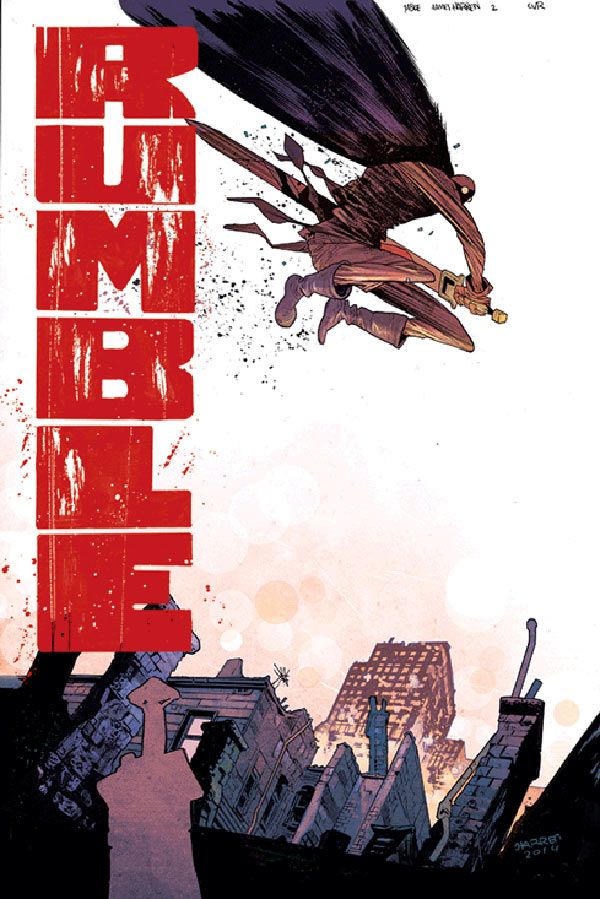I really don't know why I'm digging "Rumble" as much as I am. The characters are pretty stock, the central conflict is a mystery and the plot isn't so much high concept or low concept as no concept at all. And yet, John Arcudi and James Harren have created such an insane, strange and ballsy book that I'm addicted. The beautifully bizarre artwork of Harren and Dave Stewart is the greatest strength of the series, absorbing even when the storyline isn't, but I also have to appreciate Arcudi's confidence in scripting a story with so few hints or guideposts. "Rumble" #2 may be no clearer than #1, but it's an awesome read.
Harren and Stewart offer an amazingly oddball world. Creatures like Lerna and Mr. Bilbad are grotesque and unnerving - glomping and disgorging their food, staggering around with abnormal anatomy - but there's a plump happiness to Bilbad's big eyes and Lerna's chummy smiles. They're as gross as they are endearing. Indeed, all the "Rumble" creatures show their soft underbellies. The two monsters who attack Bobby are round and fleshy with their innards exposed, and even Rathraq is an all-too-flammable scarecrow. Often, monsters are designed to be scary because of their powerfulness or invincibility. "Rumble" is full of monsters whose vulnerabilities are part of what makes them monstrous - it's quite an effect.
Stewart's colors complete this creepy world. His frequent use of blues and dark colors is to be expected - Rathraq needs alleys to loom in, after all - but he also unexpectedly includes a ton of pink and orange. These sun-and-fire colors add liveliness and warmth to Bobby's city but they still look unnatural. Even when the late sky is turning orange, suggesting a sunset, Stewart doesn't layer the colors traditionally. He keeps things slightly off, while still using the brighter, zanier color to switch scenes up and complement Harren's character designs.
As wonderful as the world of "Rumble" is, I'm still not at all sure where it's going. In this issue, Rathraq mostly just accumulates enemies, dispensing with Bobby's attackers from issue #1, provoking the seemingly harmless old man and Lerna and bargaining with a fire-powered foe. The many pieces of the story move forward, but Arcudi doesn't give a sense of how they might escalate - merely that they are escalating. I like that approach myself, but it's certainly not for every reader.
Bobby continues to be an unremarkable everyman protagonist, though this time he gets a female "friend" to argue over. Of course, she's not drawn to be ugly like the other human characters; even in a world like "Rumble," the women are drawn as beautiful objects rather than full parts of the world. For now, it's fun to watch Bobby freak out in his utter averageness, but I can tell I'll get tired of him if he doesn't develop a few recognizable traits.
Weird, random and really enjoyable, "Rumble" has me engrossed in its surprising world. I'm excited to see how its storylines collide and its ideas play out.

